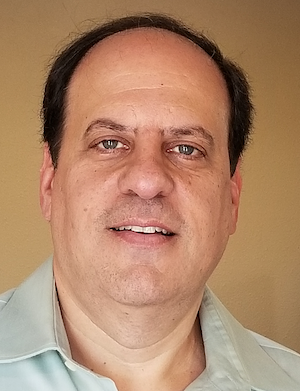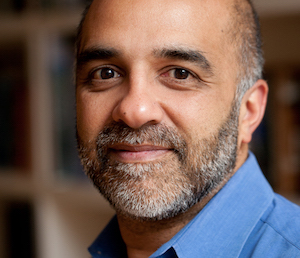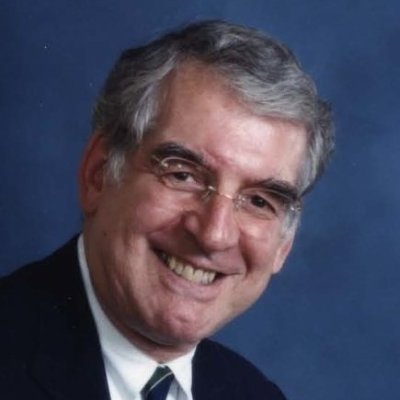21st Century Cures Act
See the following -
ONC Releases Final Rule on Interoperability: How Might it Affect Public Health?
 On March 9, 2020 the Office of the National Coordinator for Health Information Technology (ONC) released its final rule on the 21st Century Cures Act: Interoperability, Information Blocking, and the ONC Health IT Certification Program. Referred to by some people as the "Information Blocking Rule," since this is the primary topic, the document actually covers a host of other issues related to interoperability driven primarily by requirements of the 21st Century Cures Act. In addition to the final rule itself you can read the ONC press release, a comparison between the proposed and final rules, and lots of other resources.
On March 9, 2020 the Office of the National Coordinator for Health Information Technology (ONC) released its final rule on the 21st Century Cures Act: Interoperability, Information Blocking, and the ONC Health IT Certification Program. Referred to by some people as the "Information Blocking Rule," since this is the primary topic, the document actually covers a host of other issues related to interoperability driven primarily by requirements of the 21st Century Cures Act. In addition to the final rule itself you can read the ONC press release, a comparison between the proposed and final rules, and lots of other resources.
- Login to post comments
ONC Releases New NPRM on Interoperability: How Might it Affect Public Health?
 On February 11, 2019, the Office of the National Coordinator for Health Information Technology (ONC) released its latest Notice of Proposed Rulemaking (NPRM) to Improve the Interoperability of Health Information. Referred to by some people as the "Information Blocking NPRM," since this was the primary topic anticipated, the document actually covers a host of other topics related to interoperability driven primarily by requirements of the 21st Century Cures Act. Besides the initial text of the NPRM, ONC also released a set of summary slides and fact sheets to help explain the document.
On February 11, 2019, the Office of the National Coordinator for Health Information Technology (ONC) released its latest Notice of Proposed Rulemaking (NPRM) to Improve the Interoperability of Health Information. Referred to by some people as the "Information Blocking NPRM," since this was the primary topic anticipated, the document actually covers a host of other topics related to interoperability driven primarily by requirements of the 21st Century Cures Act. Besides the initial text of the NPRM, ONC also released a set of summary slides and fact sheets to help explain the document.
- Login to post comments
ONC Selects Noam Arzt to serve on the ONC Trusted Exchange Framework Task Force
 The Office of the National Coordinator for Health Information Technology (ONC) has selected Dr. Noam H. Arzt, President of HLN Consulting (HLN), as a member of the Trusted Exchange Framework Task Force. This group of healthcare and health information technology specialists will advise ONC on various aspects of the Draft Trusted Exchange Framework. This framework outlines a common set of principles for trusted exchange of health information records and minimum terms and conditions for trusted exchange as directed by Congress in the 21st Century Cures Act.
The Office of the National Coordinator for Health Information Technology (ONC) has selected Dr. Noam H. Arzt, President of HLN Consulting (HLN), as a member of the Trusted Exchange Framework Task Force. This group of healthcare and health information technology specialists will advise ONC on various aspects of the Draft Trusted Exchange Framework. This framework outlines a common set of principles for trusted exchange of health information records and minimum terms and conditions for trusted exchange as directed by Congress in the 21st Century Cures Act.
- Login to post comments
ONC Timeline for TEFCA Going Live in 2022
 Today we are pleased to announce the timeline for the Trusted Exchange Framework and Common Agreement (TEFCA). The 21st Century Cures Act, signed by President Obama in 2016, calls on ONC to "develop or support a trusted exchange framework, including a common agreement among health information networks nationally."... The timeline released today-for completion of the Trusted Exchange Framework, the Common Agreement Version 1 and the Qualified Health Information Network (QHIN) Technical Framework (QTF) Version 1-establishes our goal to have this new network open for participation in the first quarter (Q1) of calendar year 2022.
Today we are pleased to announce the timeline for the Trusted Exchange Framework and Common Agreement (TEFCA). The 21st Century Cures Act, signed by President Obama in 2016, calls on ONC to "develop or support a trusted exchange framework, including a common agreement among health information networks nationally."... The timeline released today-for completion of the Trusted Exchange Framework, the Common Agreement Version 1 and the Qualified Health Information Network (QHIN) Technical Framework (QTF) Version 1-establishes our goal to have this new network open for participation in the first quarter (Q1) of calendar year 2022.
- Login to post comments
ONC's Trusted Exchange—A Public Health Perspective
 In January 2018 the Office of the National Coordinator for Health Information Technology (ONC) issued a draft Trusted Exchange Framework and Common Agreement (TEFCA), and related supporting documents, in response to a requirement imposed by Congress in the 21st Century Cures Act. The Act says that the TEF may include a common method for authenticating users, a common set of rules, enabling policies, and a process for managing non-compliance. Nowhere does the Act instruct ONC to determine an actual technical architecture in this process, though such a step is not precluded either. The primary document is in two parts: Part 1 is a set of principles that set the foundation for Part 2 which is a set if minimum terms and conditions for trusted exchange.
In January 2018 the Office of the National Coordinator for Health Information Technology (ONC) issued a draft Trusted Exchange Framework and Common Agreement (TEFCA), and related supporting documents, in response to a requirement imposed by Congress in the 21st Century Cures Act. The Act says that the TEF may include a common method for authenticating users, a common set of rules, enabling policies, and a process for managing non-compliance. Nowhere does the Act instruct ONC to determine an actual technical architecture in this process, though such a step is not precluded either. The primary document is in two parts: Part 1 is a set of principles that set the foundation for Part 2 which is a set if minimum terms and conditions for trusted exchange.
- Login to post comments
Questions About The FDA’s New Framework For Digital Health
 In June 2017, the new Food and Drug Administration (FDA) commissioner Scott Gottlieb pre-announced his agency’s Digital Health Innovation Action Plan that indicates notable shifts in the agency’s approach to digital health technologies. This plan is an important step in FDA regulation of this area, a process that began in 2011 with a draft guidance, followed by significant congressional actions. The new changes should not be surprising, given critiques published by Gottlieb prior to re-joining the FDA...
In June 2017, the new Food and Drug Administration (FDA) commissioner Scott Gottlieb pre-announced his agency’s Digital Health Innovation Action Plan that indicates notable shifts in the agency’s approach to digital health technologies. This plan is an important step in FDA regulation of this area, a process that began in 2011 with a draft guidance, followed by significant congressional actions. The new changes should not be surprising, given critiques published by Gottlieb prior to re-joining the FDA...
- Login to post comments
Report on ONC’s Working Session on Patient Identity and Matching
 On Monday, August 31, I attended the final Working Session on Patient Identity and Matching. This virtual event was hosted by the Office of the National Coordinator for Health IT (ONC). This Working Session was a followup to an earlier session back in June 2020. The event last week had over 300 attendees and covered a wide range of topics and technologies related to patient identity and matching. These ONC Working Sessions are being driven by requirements that are part of the 21st Century Cures Act as well as a Congressional request from December 2019 to continue to "...evaluate the effectiveness of current [patient identity and matching] methods and recommend actions that increase the likelihood of an accurate match of patients to their health care data." Much of the focus of this study has been on whether a national patient identifier should be implemented in the US.
On Monday, August 31, I attended the final Working Session on Patient Identity and Matching. This virtual event was hosted by the Office of the National Coordinator for Health IT (ONC). This Working Session was a followup to an earlier session back in June 2020. The event last week had over 300 attendees and covered a wide range of topics and technologies related to patient identity and matching. These ONC Working Sessions are being driven by requirements that are part of the 21st Century Cures Act as well as a Congressional request from December 2019 to continue to "...evaluate the effectiveness of current [patient identity and matching] methods and recommend actions that increase the likelihood of an accurate match of patients to their health care data." Much of the focus of this study has been on whether a national patient identifier should be implemented in the US.
- Login to post comments
Report on the ONC 2017 Technical Interoperability Forum
 Last week I attended with my colleague Mike Berry the ONC 2017 Technical Interoperability Forum. This meeting was convened under the 21st Century Cures Act passed by Congress in late 2016. Several hundred participants attended a series of panel presentations and discussions. The forum took place over one-and-a-half-days. The forum covered a variety of topics related to interoperability, including discussion of the business case for interoperability, semantics, national networks, and application programming interfaces (APIs). In many ways the speakers were “the usual suspects” involved in national networks, standards development, and HIE planning and implementation.
Last week I attended with my colleague Mike Berry the ONC 2017 Technical Interoperability Forum. This meeting was convened under the 21st Century Cures Act passed by Congress in late 2016. Several hundred participants attended a series of panel presentations and discussions. The forum took place over one-and-a-half-days. The forum covered a variety of topics related to interoperability, including discussion of the business case for interoperability, semantics, national networks, and application programming interfaces (APIs). In many ways the speakers were “the usual suspects” involved in national networks, standards development, and HIE planning and implementation.
- Login to post comments
The Administration's Cancer Moonshot Will Just Start Coming Together as They Leave Office, but Republicans Can Keep It Going.
When President John F. Kennedy made his moonshot speech in September 1962, he thought he had at least two years left in office—over six if he got reelected. Plus, his party controlled Congress, giving him even more power to reach that goal. President Obama announced his moonshot to cure cancer (to be headed by VP Joe Biden) in his final State of the Union address. This week the administration revealed in a memorandum that the program may not be fully fleshed out until the final weeks of Obama's second term—with Republicans likely still holding Congress and perhaps entering the White House...
- Login to post comments
The EHR Debacle: Has Organized Medicine Failed Us?
 By now, it should be no secret that physicians in the United States, although largely receptive to the idea of electronic health records (EHRs), are widely dissatisfied with the current state of the art, and with the way that EHR adoption is being implemented.[1] Indeed, Congress[2] has shown continuing – but sometimes seemingly perfunctory – interest in the concerns of physicians and other health care providers, and I am at this point pessimistic about seeing any results of its efforts in the near future unless a more fundamental change is made in our approach. As Einstein noted, “We cannot solve our problems with the same thinking that created them.”
By now, it should be no secret that physicians in the United States, although largely receptive to the idea of electronic health records (EHRs), are widely dissatisfied with the current state of the art, and with the way that EHR adoption is being implemented.[1] Indeed, Congress[2] has shown continuing – but sometimes seemingly perfunctory – interest in the concerns of physicians and other health care providers, and I am at this point pessimistic about seeing any results of its efforts in the near future unless a more fundamental change is made in our approach. As Einstein noted, “We cannot solve our problems with the same thinking that created them.”
- Login to post comments
The Evolving Landscape of Health Information Exchange
 The original vision for nationwide health information exchange was a “network of networks” model where local HIEs would interact HIE-to-HIE to form a virtual national network. But notice that many of the new initiatives are essentially solving a different problem: they are enabling point-to-point connections across a wider geography and set of clinical sites. This seems more like a large, single national network rather than leverage of more distributed organizations or implementations. Only time will tell if these private sector initiatives will collaborate, converge or compete. And only time will tell of the limitations of ONC’s ability to influence and provide leadership will creates gaps or provide new opportunities for innovation.
The original vision for nationwide health information exchange was a “network of networks” model where local HIEs would interact HIE-to-HIE to form a virtual national network. But notice that many of the new initiatives are essentially solving a different problem: they are enabling point-to-point connections across a wider geography and set of clinical sites. This seems more like a large, single national network rather than leverage of more distributed organizations or implementations. Only time will tell if these private sector initiatives will collaborate, converge or compete. And only time will tell of the limitations of ONC’s ability to influence and provide leadership will creates gaps or provide new opportunities for innovation.
- Login to post comments
The Fax of Life
When you walk into the Arlington Women’s Center, you see a spacious waiting room with artwork on the wall, maroon chairs, and a friendly receptionist sitting at the front desk. The obstetrics and gynecology practice serves a high-income suburb of Washington, DC. Framed photographs on the wall advertise the center’s physicians who’ve made lists of the city’s best doctors. It’s a modern, upscale doctor office. But when it needs to share patient records, it turns to an outdated technology: the fax machine...
- Login to post comments
The HITECH Era – A Patient-Centered Perspective
We appreciate the recent perspectives published in the New England Journal of Medicine on the Health Information Technology for Economic and Clinical Health (HITECH) Act of 2009 and the positive impact that it and resulting health IT policies have had on U.S. health care.1,2 The perspectives highlighted the remarkable increase in adoption and use of electronic health records (EHRs) over the past eight years, thanks to the HITECH Act and to ONC’s and CMS’s implementation of it with major advice and help from the multi-stakeholder HIT Policy and Standards committees...
- Login to post comments
The Pathway to Patient Data Ownership and Better Health
Digital health data are rapidly expanding to include patient-reported outcomes, patient-generated health data, and social determinants of health. Measurements collected in clinical settings are being supplemented by data collected in daily life, such as data derived from wearable sensors and smartphone apps, and access to other data, such as genomic data, is rapidly increasing. One projection suggests that a billion individuals will have their whole genome sequenced in the next several years. These additional sources of data, whether patient-generated, genomic, or other, are critical for a comprehensive picture of an individual’s health...
- Login to post comments
Too little research backs high-risk medical devices
The U.S. Food and Drug Administration's Premarket Approval pathway allows high-risk medical devices on the market with only one study to prove their safety and effectiveness, and there are a limited number of studies done post-market, according to research published in Journal of the American Medical Association. Medical device regulation in the U.S. is more rigorous than in other parts of the world, but "the difference is, in many European countries they have much better capacity to follow devices once they are in practice," senior author Joseph S. Ross, M.D., of the Yale University School of Medicine, told Reuters.
- Login to post comments